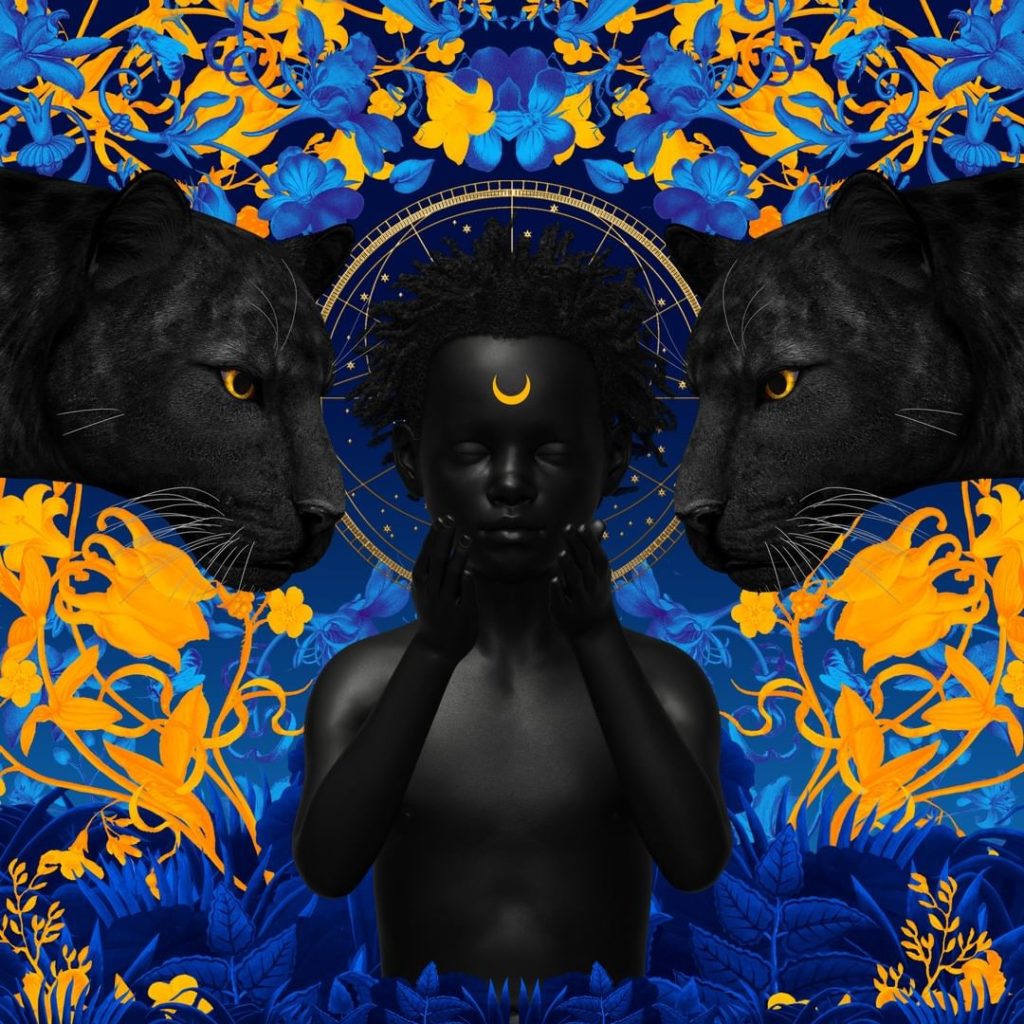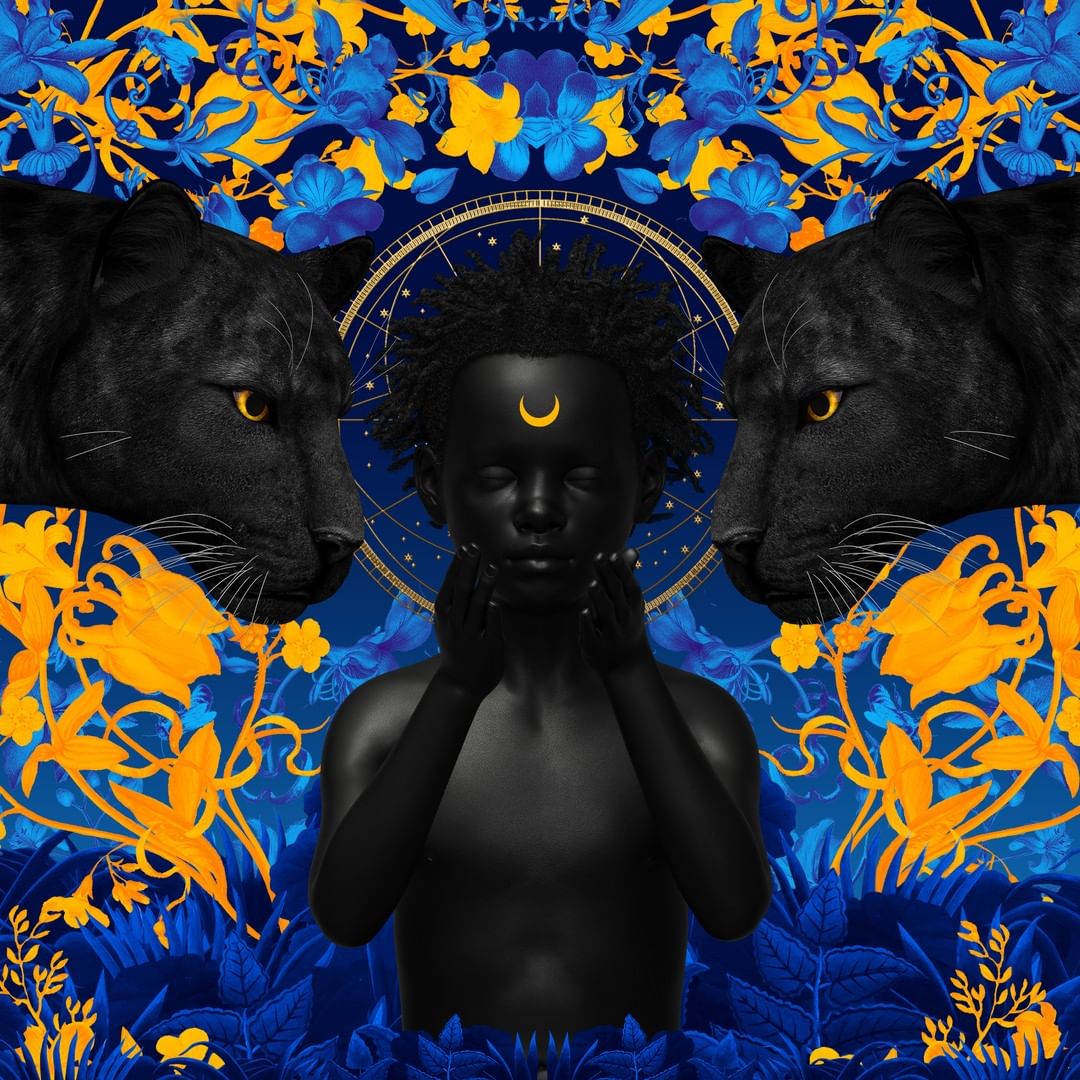Niyi Okeowo was one of the artists that exhibited at Art X’s NFT exhibition project titled, Reloading…, and recently sold his art—“Indigo Child”—for 1.2ETH ($4,140), on the popular NFT marketplace, SuperRare.
But instead of creating individual NFT artworks, he wants to create long-term projects also known as collectibles.

Okeowo explains “Indigo Child” is inspired by children with the ability to harness nature’s power. Citing Black Panther as a point of reference, he says he wanted to depict how these special children go through a rite of passage to create a spiritual binding ceremony with nature and a panther, as seen in the art.
Okeowo has worked as a photographer, 3D artist, visual artist, creative strategist, and an animator for almost a decade. The 30-year-old visual artist, who started designing in 2009, describes himself as an art director—for lack of appropriate words to cover the various strands of his practice in graphic design, 3D art, and photography.
A graduate of Mass Communication from Covenant University, Okeowo learned to design by watching tutorial videos on the internet. He worked as an art director on Apollo, the sophomore album of Nigerian Afro-Life artist, Fireboy DML.
In his designs, Okeowo creates alternative virtual experiences by using 3D, bright colours, music, and socio-political themes—especially around mental health, which is a largely unacknowledged reality in Nigeria.
Beyond music, Okeowo has designed experiences, identities, and visuals for a roster of high-profile clients, including Smirnoff, Uber, and LVMH.
During the pandemic, Okeowo co-founded a company, Thrill Digital, that uses Virtual Reality (VR) and 3D to create digital fashion shows and stores. Thrill Digital brings fashion and shopping experiences to its users’ homes by simulating an experience whereby, using a VR headset or personal computer, users can check out and pick up items. With UX and product designer, Ayodele Erinle, as co-founder, Thrill Digital is tapping into the digital fashion trend.
Okeowo also creates colourful illustrations under the moniker @hellomrcolor and shares them on his various social media accounts.
“I like posting my artworks online to keep me active.”
Stuck on both sides of the NFT coin
Drawn to the lack of middlemen in the NFT space, Okeowo is happy to sell his work and get direct compensation without any interference.
Although Okeowo has made as much as 1.5ETH—about $6,500—from one artwork, he has reservations about the environmental degradation caused by blockchain technology. “I am trying to make sure we’re not part of the problem,” Okeowo said.
He expressed concern about how vulnerable people are because the NFT space is new: “There are a lot of people who don’t know about the space, and that makes them vulnerable to scams.”
Yet, Okeowo appreciates the opportunity blockchain technology presents for artists who have been struggling for years to get funds to complete the projects they have been working on.
Investing in the future of NFTs
With the prices of major NFT arts and projects falling, NFT collectors and artists are shifting their focus to digital collectibles. One of the most popular NFT projects, CryptoPunks, fell from a weekly average of $99,720 in early May to $50,840 at the start of June. The prices of the digital arts on popular NFT marketplace SuperRare have also fallen, on average, from a record $31,778 to $5,342 in a similar time span.
And one of the reasons given for this, according to Gauthier Zuppinger, Chief Operating Officer of Nonfungible, a company that tracks the NFT market, is the sharp drop in the NFT market was a sudden rise and fall in sales of new crypto collectible items called MeeBits — made by the creators of CryptoPunks.
So, instead of selling individual NFT arts, Okeowo is now more interested in NFT projects or collectibles because of their longevity. ”I don’t want to sell artworks on platforms,” Okeowo says, explaining why he prefers collectibles. “I want to create something that keeps evolving.”
Note: This article has been updated.











